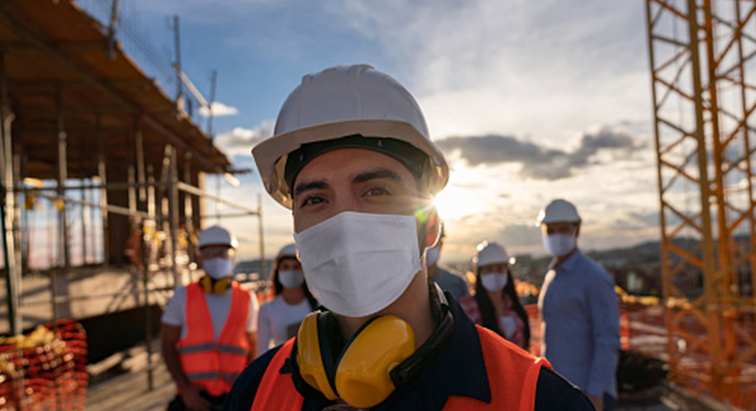The COVID-19 pandemic is affecting millions of lives and it’s also wreaking havoc on countless industries across the globe. The construction industry, what McKinsey & Company calls “the world’s largest ecosystem,” is no exception. Business leaders are unsure of the long-term impact of the crisis, but they look to top market research firms and other experienced forecasters to offer predictions that can help them prepare for change.
In June, McKinsey published a comprehensive report on the impact of disruption in the construction industry, detailing what key market trends they see now as reshaping the way things will work in our field moving forward.
Reviewing the biggest COVID-related takeaways from this report will help industry professionals—construction engineers, designers, shippers, erectors, material producers, and even students studying to begin their careers in construction—keep these trends in mind and get ready for the future of construction.
Areas to Watch for COVID-Caused Disruption
The construction industry has seen slow productivity growth over the years: 1 percent annually for the past two decades. And industry professionals can attest to the large everyday overruns in cost and time. That’s why it’s unsurprising that EBIT earnings sit at around 5 percent even as we face the pandemic’s impact.
But there are several elements of the industry that COVID may impact. Look out for how the coronavirus may accelerate short-term and long-term changes in:
- Branding & Customer Centricity: Construction brands will boost performance by exploring product and service quality, value, timing of delivery, reliability, service offering, and warranties.
- Business Types & Ecosystem: The industry will become more standardized, consolidated, and integrated due to an evolving construction process and companies will adopt target niches and segments.
- Cost Pressure: Tight public budgets and continuing problems with housing affordability issues will make the construction industry reevaluate business approaches.
- Digital Transformation: Smart buildings, IoT, building-information modeling (BIM), automated parametric design, and other technology innovations will see greater investment and growth.
- Industrial Approaches
- New Materials: Innovations that move past traditional materials will lead to lighter-weight and lower-emissions products and will affect logistics.
- Productization & Specialization
- Scarcity of Skills: Shortages in skilled-labor and COVID’s impact on job logistics complexity may continue.
- Sustainability: Climate change effects will place greater pressure on businesses to reduce carbon emissions.
- Value-Chain Control: Vertical integration or strategic partnerships will allow companies to better manage value chain activities.
More than half of the report’s respondents have raised their industry investments, believing that the pandemic will speed up any transformation that was previously expected to start out slow. This includes digitalization, which is becoming a necessity in many aspects of the modern construction industry business due to the physical restrictions we continue to experience and the need for smarter ways of working. The greater investment matches the 77 percent rise in R&D spending that we’ve seen from the top 2,500 global construction companies since 2013.
Construction industry safety is also seeing big changes. COVID has introduced new health and safety procedures that companies are required to perform to keep workers safe on job sites and in manufacturing facilities and other work environments. But as the pandemic continues, these safety initiatives won’t go away. Professionals will need to find ways to keep productivity and performance high even as they deal with the added complexities of safety measures touching nearly every component of their business.
The Rise in Precast Construction
Modular and off-site construction is a clear solution to the restrictions the coronavirus pandemic has caused, allowing fewer workers to be on job sites to reduce contact and uphold social distancing efforts. And this is the perfect opportunity for more construction companies to utilize precast, prestressed concrete and become familiar with its many other benefits, in addition to reducing on-site crowds. Precast construction will help projects streamline processes and speed up timelines, and many architects and owners don’t realize that precast’s design versatility will support structures of all kinds. Now is the time for precast producers to showcase their capabilities and expand their reach across the industry.
And the precasters of the PCI Mid-Atlantic Chapter are doing just that. If you’re interested in precast resources that may benefit your business, explore the PCI Mid-Atlantic Solutions Center or get in touch with PCI-MA for higher education partnerships and other opportunities for business growth.





